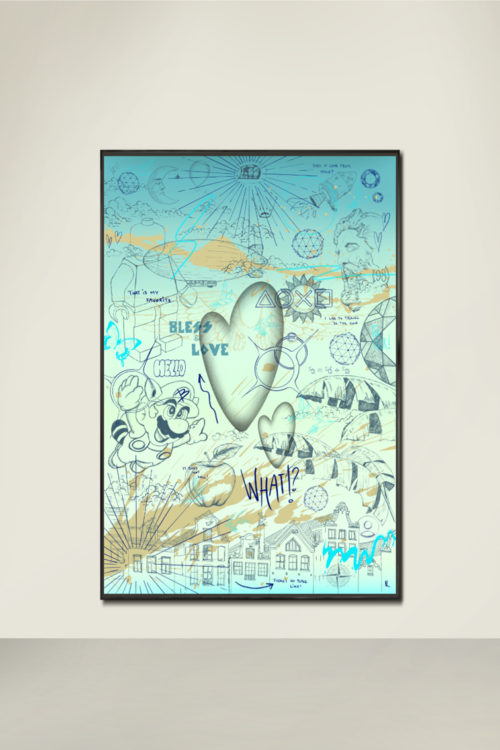
art and making art
“Art is for the people”
Ronald Riboet: The People’s Artist and the True Purpose of Art
In the ever-evolving landscape of the art world, few voices resonate as powerfully as that of Ronald Riboet. An artist, thinker, and advocate for the role of art in society, Riboet challenges the conventional notions of creativity and the artist’s intent. His philosophy is simple yet profound: art is inherently for the people.
Riboet firmly believes that when an artist creates a piece and chooses to exhibit it publicly, they are not just sharing a personal expression but entering into a dialogue with the audience. He argues that claiming to create solely for oneself is an illusion; the very act of showing one’s work transforms it from a private endeavor into a shared experience. This perspective invites a reevaluation of what it means to be an artist and the purpose of artistic expression.
Art as a Shared Experience
According to Riboet, if an artist insists that their work is only for them, then it should remain in the solitude of their studio. The moment it is presented to the public, the intention shifts. No longer is it a solitary creation but a communal one. Art becomes a bridge between the creator and the audience, a medium through which ideas, emotions, and stories are shared.
This philosophy underscores the importance of audience engagement. Riboet emphasizes that the viewer plays an integral role in the life of an artwork. It is the people who interact with the art that bestow it with meaning, interpreting it through their personal experiences and perspectives. Thus, in Riboet’s view, art is not solely the product of an artist’s inner world but a collaborative effort that exists in the space between the artist and the audience.
The Power of the People
Riboet’s assertion that “the people are the ones who can give your creation the title art” is a powerful reminder of the democratic nature of artistic expression. In this light, the audience’s reactions and interpretations hold as much weight as the artist’s original intent. This democratization of art challenges the elitist notions that often pervade the art world, where only a select few are deemed worthy of defining what constitutes “art.”
By acknowledging the audience’s role in the artistic process, Riboet champions inclusivity and accessibility. He advocates for creating art that resonates with diverse communities, encouraging artists to engage with societal issues and foster connections through their work. This approach not only enriches the artistic landscape but also empowers individuals to see themselves as part of the narrative, reminding everyone that art can be a tool for social change and cultural dialogue.
Conclusion
Ronald Riboet’s perspective on art as a communal experience is a refreshing take that challenges artists and audiences alike to reconsider their roles. By recognizing that art is inherently for the people, Riboet invites a broader conversation about the purpose and impact of creativity in our lives. In a world that often emphasizes the personal and isolating aspects of artistic creation, his philosophy serves as a reminder that art is, at its core, about connection, expression, and community.
As we continue to navigate the complexities of culture and creativity, embracing Riboet’s vision may lead us to a deeper appreciation of art’s role in shaping our collective experiences. After all, when artists create with the knowledge that their work is for the people, they open the door to a vibrant and inclusive dialogue that transcends individual expression.


